Global competency roundtable sparks conversation about lack of diversity in teaching staff
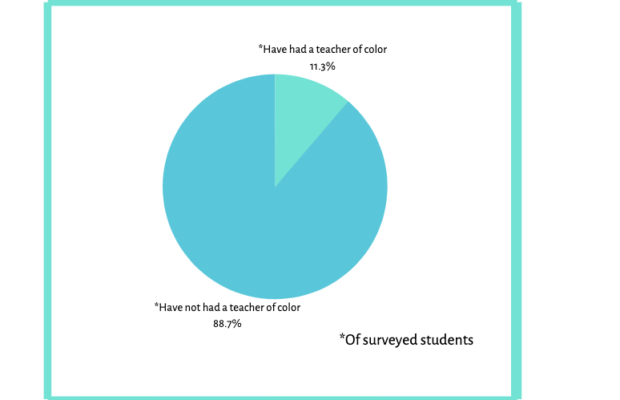
Signs with handwritten messages are held high above the heads of protestors as they flood Cedar Falls main street, chanting out, “No justice, No peace.” On Oct. 5, hundreds of Iowans turned out to show support for the movement. They marched from University Avenue to City Hall, holding signs that read a phrase so many Americans have come to know these past few months: “Black Lives Matter.”
This scene is nothing new to many Americans, as the Black Lives Matter movement continues to grow in numbers. Recently, the deaths of Breonna Taylor and George Floyd have caused a surge in the number of protests, as citizens demand action from the government in response to these events.

Iowa is one of the states at the center of the criticism of police brutality, a state where Black people only make up about four percent of the total state population, but account for nearly 24 percent of cases where police force was used, according to the Iowa Department of Public Safety records obtained by the Associated Press.
The nationwide effect of these protests were not lost on Cedar Falls, and in a statement put on the school district website, Cedar Falls Schools openly supported the Black Lives Matter Movement. “While no one act will end racial injustice, we believe that the cumulative effect of many acts will create systemic change. In solidarity with Black families, educators, and community members, we are committed to listening, learning, growing, and acting to realize a future in which every child has the opportunity to flourish unhindered by racism and racial injustice,” the statement said.
According to Tara Estep, Executive Director of Enrichment and Special Programs, the district got feedback from students that helped staff understand their struggles when it comes to racial inequity. “We did put out a statement right away and had feedback that was heartbreaking from current and former students. One of the first steps we took was to reach out to those that tweeted and commented and asked to hear their stories, if they were willing to share. The first step is to understand our current reality; to listen and understand their stories to help us affect change in the District,” Estep said. “Then we revamped our equity committee with additional student, staff and community voices to make sure we have actionable goals in each area and to hold us accountable.”
In an attempt to stay true to their word, Cedar Falls Community School District took part in a nationwide global competency virtual roundtable that featured prominent leaders in the Cedar Valley. The event, Awareness2Action Global, was hosted by Preparing for Purpose and “brings together experts to lead participants from awareness of Global Competencies to taking action on specific issues in our communities,” according to their website.
Diversity and racial inequities in the Cedar Valley has become a topic of controversy and heavy discussion, due to the recent surge in Black Lives Matter Protests and also the 2018 USA Today Article that listed Waterloo-Cedar Falls area as the worst place to live for black Americans based on economic disparities between races.
Although the school has publicly supported the Black Lives Matter movement, many students don’t. According to junior Andrew Schipper, the growing protests do not help to move America forward. “They only support black people in name. In reality, they are a neo-Marxist group that wishes to destroy America and everything it stands for by destroying statues and redefining our history, rioting against and sometimes killing the police, and silencing opposition by forcing everyone to either side with them or be labeled a racist that they may as well just kill, some of whom they already have,” Schipper said. “Given the heart of the movement, the so-called targeting of black people by police, is not supported by the statistics and even if it were would not excuse rioting, looting, and murder.”
Senior Brody Bruns shared a similar view to Schipper, and said that he thinks the movement doesn’t diminish racism, but rather encourages it. “Well for one, the Black Lives Matter movement puts more black lives in danger. Two, it’s done nothing to help the cause but de-fund the police which determines how good of training they’ll get,” Bruns said. “Defunding the police will cause this to happen more. And lastly, Blue/All Lives Matter. It’s racist to raise one race higher than another.”
It’s not unprecedented that Iowa students might be against the movement as Iowa is leaning toward a red state, with a 51.1 percent voter turnout in favor of Donald Trump in the 2016 election, and conservative candidates are again in statistical dead heats in candidacies for top legislative positions in the upcoming 2020 presidential election. The president himself has publicly condemned the Black Lives Matter movement and protests, calling it “a symbol of hate,” while receiving criticism in his delay to denounce white supremacy.
The topic of racial awareness hits close to home for many African American students, including junior Ahmad Madlock. When he was only five years old, Madlock discovered how the color of his skin changed the way others viewed him. “The earliest real memory of prejudice was probably when I was very young, about five or six. I kept getting praised about how ‘articulate and smart’ I was, as if it came as a surprise to white people,” Madlock said. “I’d be looked at like a zoo animal anytime I’d speak in an issue I care about.”
Those difficult memories have stayed with Madlock throughout his life, and he still experiences similar moments in high school. “Every day, in more than one, I feel that I am treated differently because of my race- whether it be being singled out in class, or mistreated elsewhere on our campus,” Madlock said.
For Madlock, the Black Lives Matter movement has shed on light on something he’s dealt with all his life. “The Black Lives Matter Movement, for years, has made me a more conscious individual. It has given me a larger platform to stand for what and who I believe in. It has also, however, brought a host of opposition my way,” Madlock said. “Well, Black Lives Matter stands not only for our living, but our thriving, and part of thriving is education. Black education is so, so essential to really caring about your students of color and all students, really. It starts with truly solidifying the idea that Black History is American History. That it’s not to be set aside for February.”
Some students share similar views to Madlock, including senior Alexis Basurto. “I think it is important to recognize the movement for what it is: A call for justice. No one deserves to be killed by a police officer and the fact that police are killing people of color isn’t right,” Basurto said. “Black and brown lives are seeking justice for police brutality.”
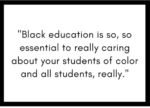 When it comes to diversity awareness in school, Madlock said that the administration and students have a long way to go. “There are so so so many things our district is just now doing that should’ve been done 25 years ago. Nonetheless, a true sense of support for our students of color is number one. Being black at CFHS is not easy, so it’s administrators’ jobs to help alleviate that,” Madlock said.
When it comes to diversity awareness in school, Madlock said that the administration and students have a long way to go. “There are so so so many things our district is just now doing that should’ve been done 25 years ago. Nonetheless, a true sense of support for our students of color is number one. Being black at CFHS is not easy, so it’s administrators’ jobs to help alleviate that,” Madlock said.
Estep said that the movement inspired the district administration to make some changes to try and combat instances of racism within schools. “We have a district equity committee and as a result of the Black Lives Matter movement, the committee has met multiple times and created an action plan focused on four specific areas to make change; students, staff, systems and policies and family and community,” Estep said. “For students we have started listening rooms and had all students take an equity survey. We will develop our next steps using the data from the survey. Staff took the Harvard implicit Bias Test and had watched a video on microaggressions. On October sixteenth, we had a follow up to the training in August and connected with social and emotional learning.”
CFHS Counselor Susan Langan said this year will be different for not only students of color, but all students and staff. ““Students of different races have always been really important to us, making sure that we are inclusive of them and making sure that they have the same kind opportunities. But I think this year with the Black Lives Matter movement made Cedar Falls take a step back and realize we need to do a bit more here,” Langan said. “I think as we examine what we are doing and making sure what we implement is going to be very good, not something that we do just to check a box. We want to do something that is going to be impactful and is going to be beneficial to the students. And not just to our students of color, but all of our students. It’s not just students of color that need to be educated, but all of our students, including the staff to make sure that students of color feel welcomed here.”
When it comes to the statement “All Lives Matter,” which is widely used by those against the Black Lives Matter movement, senior Noelani Mattson said it ignores the larger problem at hand. “Black people have been oppressed and fighting for equality for over 400 years now, and it is saddening that racially motivated hate crimes still occur today,” Mattson said. “People say all lives matter, but they need to understand that Black Lives Matter does not mean that the other races don’t matter. It simply means that black lives need more attention at the moment because of injustice and inequality at the hands of law enforcement and other citizens, which is why the movement exists.”
In a survey of 133 Cedar Falls High School students, 88.7 percent said that they had never had an African American teacher in their time at the Cedar Falls Community School District. However, in Waterloo, the school district has committed to diversity through adding African American history classes beginning in the fall of 2021, while also displaying on their website that one in five staff members is a person of color.
Tara Thomas, the director of school and community relations for the Waterloo Public School District said that making diversity a priority in schools has allowed for better racial awareness between students and staff. “Diversity enhances the educational experience for students if staff reflect them in terms of race, cultural awareness and background,” Thomas said. “We prioritize diversity by intentional focus on reaching prospective employees of color through job fairs, networking and relationship building. All staff are part of ongoing equity training and cultural consciousness.”
In addition to prioritizing hiring people of color, Thomas said that the district aims to provide resources to students that celebrate diversity and help deal with racial issues that they may face in school. “Staff and students are welcome to freely discuss issues around race, and we encourage students to support their peers through numerous initiatives, clubs and classroom conversations,” Thomas said. “We have groups like AAMAS (African-American Males Achieving Success) and other groups across the district that focus on racial and gender issues.”
Madlock attributed the lack of diversity in teaching staff to the overall school environment and the lack of racial awareness among students. “If I were a black educator, nothing and I mean not a thing is drawing me toward CFHS or our district at all,” Madlock said. “Aside from the hiring techniques, what as a black education is drawing to CFHS or our district in general? Racially, we do not have much going for us in that realm. I have never had a black teacher in my time at Cedar Falls.”
Tara Estep said that the district hopes to address diversity within the hiring process as they progress forward and use feedback from students to be more aware of issues that arise with race. “It’s hard to determine (why most students at CFHS have never had a black teacher). One of the steps we are taking is collaborating with other districts to learn how we can better hire, recruit and retain diverse staff members,” Estep said.
For Madlock, it’s the students in addition to the administration that need to work on being respectful to other races while being conscious of prejudices. “I believe our admin is beginning to work on being more welcoming from a policy standpoint. Quite honestly, it’s our students that need the most improvement,” Madlock said.

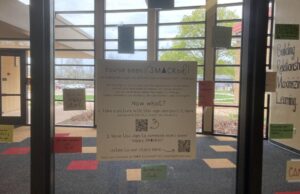

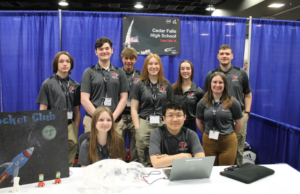
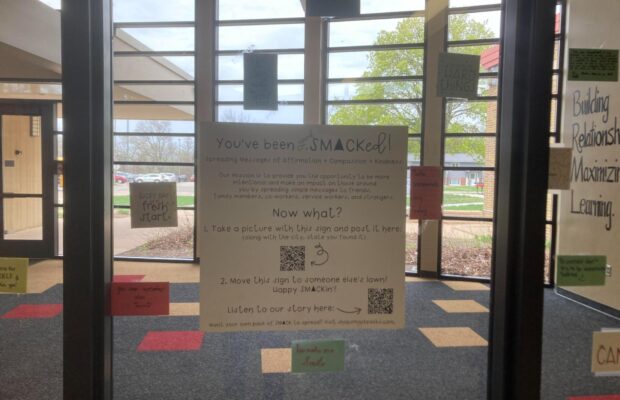




You must be logged in to post a comment Login